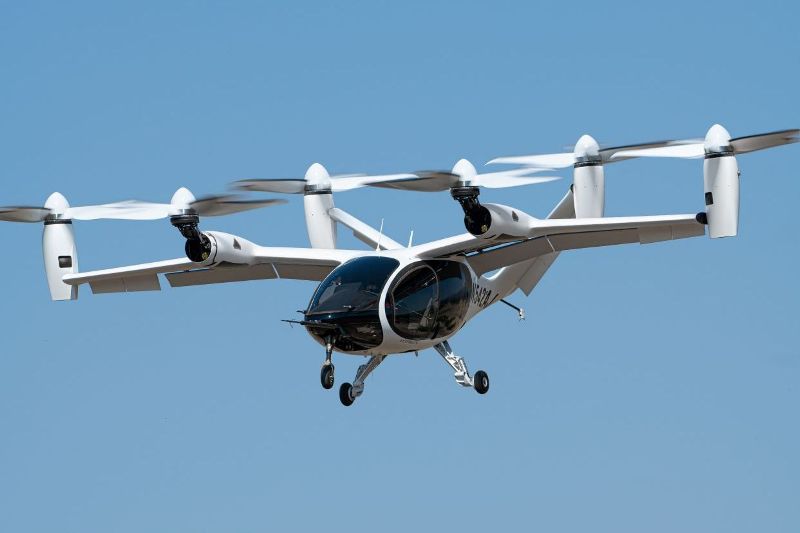
A Brief History of eVTOLs
The idea of personalized air transport has been around for decades, but factors like cost and safety have stood in the way of making this a reality in the past. Flying cars that could reduce hours-long trips to mere minutes, thereby improving productivity, seemed to be a far-off dream. Now, advances in technology make small-scale aviation feasible. Smack in the middle of the renewed interest for personal aviation are the electric vertical takeoff and landing (eVTOL) vehicles.
In terms of capabilities, eVTOL is a cross between helicopters and drones. Like a helicopter, it can lift off the ground and hover. eVTOLs, however, have battery-powered electric motors instead of gas turbine engines. The use of electric propulsion in eVTOLs cuts off emission and noise that helicopters usually generate. eVTOLs are larger than drones. Most prototypes can accommodate two to four passengers and transport them in short trips around densely populated areas.
Urban Air Transport: A Look Back

eVTOLs are not the first vehicles capable of carrying air passengers over short distances. In the 1940s, an urban helicopter airline operated in New York, transporting people between major airports in the city and surrounding towns. A series of fatal accidents in the 1970s, however, led to the airline’s closure. Eventually, safety concerns over urban air transport pushed it to the back burner. The level of noise, as well as the high price tag required to operate and maintain such set up, were also discouraging.
Proponents of eVTOLs will argue that their applications for small-scale transport is far superior to the old scheme. Unlike helicopters, eVTOLs include several rotors spaced around the aircraft so there is less danger if one component were to fail. Maintaining eVTOL parts, including rotors and batteries, is also potentially much cheaper. Additionally, eVTOLs are much quieter than helicopters. Developers claim that they are able to blend in with the urban soundscape and can reduce noise complaints.
The Rise of the eVTOL
The eVTOL phenomenon began to capture public attention around 2008, when photos and videos of drones circulated the internet. People were fascinated with drones and their many potentials for surveillance and parcel transportation. Soon enough, drones have established themselves in the greater aviation history with their legitimized, utilitarian roles. Regulations were set up for registering, piloting and operating drones in certain airspace, as well as other limitations.
Same as drones, eVTOLs are slowly getting public acceptance for their potential role in the urban air mobility industry. While they have yet to be deployed en masse, a number of successful demonstrations have transpired in chosen urban areas around the world. In 2013, German eVTOL startup Volocopter had its first unmanned flight of the VC200 in Karlsruhe, Germany. Since then, air mobility companies have been conducting test flights on their own prototypes.
2017 was a big year for the eVTOL sector. Frontrunners like Lilium, Astro Aerospace (OTC:ASDN) and Kitty Hawk held public demonstrations to showcase what their aircrafts could do. Lilium’s all electric jet Eagle flew in Munich, Germany, while Kitty Hawk’s Cora took to the California skies. Meanwhile, the first manned flight of Astro Aerospace’s ELROY took place in Sofia, Bulgaria. Another eVTOL developer, Vertical Aerospace, flew its concept aircraft indoors at Cotswold Airport, England.
Within two years, there were more eVTOL companies conducting both manned and unmanned test flights across the globe. Airbus organized demonstrations of its newest aircrafts both in the United States and Germany. Chinese startup eHang was also revealed to be holding manned flights of the EH184 in Guangdong Province. eVTOL designs ranged from single-seat hovercrafts to six-seater air taxis, some with conventional wings and some without. Propulsion schemes were anywhere from tiltrotor to multirotor configurations.
The Technical Challenges of eVTOL

Offering speed and convenience, with noise and emissions reductions, eVTOL vehicles appear to be the perfect solution for fast commutes. Despite these advantages, there are still many obstacles that developers are facing to get these aircrafts to the market. One challenge is the high initial costs it will entail to build the actual aircraft. While in time, eVTOLs will be the most cost-efficient way to travel, the early stage costs will be pretty steep. Production, sales and even insurance are bound to pump up the price of those early rides.
Another challenge is securing take off and landing space. In order for eVTOLs to reach their potential as the ultimate commuting solution, cities will have to procure multiple spots in core areas for take off and landing. Without these, the airways will only become as congested as the turnpikes. Access to airspace is another obstacle. Before eVTOLs can fly in our skies, there should be room for them. One solution being proposed is to incorporate an unmanned aircraft traffic management system (UTM) into an existing one.
Meanwhile, one technical challenge that eVTOL developers are facing is energy density. eVTOLs need efficient batteries to make flights more feasible across longer ranges. Currently, most electric aircrafts are fit for shorter distances due to the mass of batteries they are carrying. Developers have been looking for ways to lighten the weight of their aircrafts while maintaining strength, but it has been a difficult feat. For instance, fossil fuel hydrocarbons pack a lot of energy, but they are not exactly light.
Floodgates Open for eVTOL Investments
The good news for the eVTOL industry is that there is no shortage of investments from both public and private sectors. Every year, billions are being poured into space, giving opportunities for anyone who can create a more efficient means of urban transit. Major players like Astro Aerospace and Volocopter are perfecting their own designs, but more and more startups are catching up and competing to be the first in the market. In the United States, the Department of Defense has been known to support and fund industry frontrunners.
California-based Joby Aviation is one of the best-funded eVTOL developers in the world. In recent years, it has partnered with multinational automotive manufacturer Toyota and technology company Uber. A merger with a special purpose acquisition company (SPAC) is expected to provide around $1.6 billion of cash, setting Joby Aviation’s market value at $6.6 billion. With all these funding, the company has the capacity to construct a scaled manufacturing facility this year.
Lilium is also raking in additional funding from the public markets via a SPAC reverse merger. The move will bring the German startup around $700 million to $800 million of investment. A partnership with infrastructure developer Ferrovial will pave the way for Lilium’s very own vertiport network across Florida. Meanwhile, Volocopter has recently raised over $240 million in its Series D funding, accelerating the company’s bid to launch its first commercial routes by 2023.




